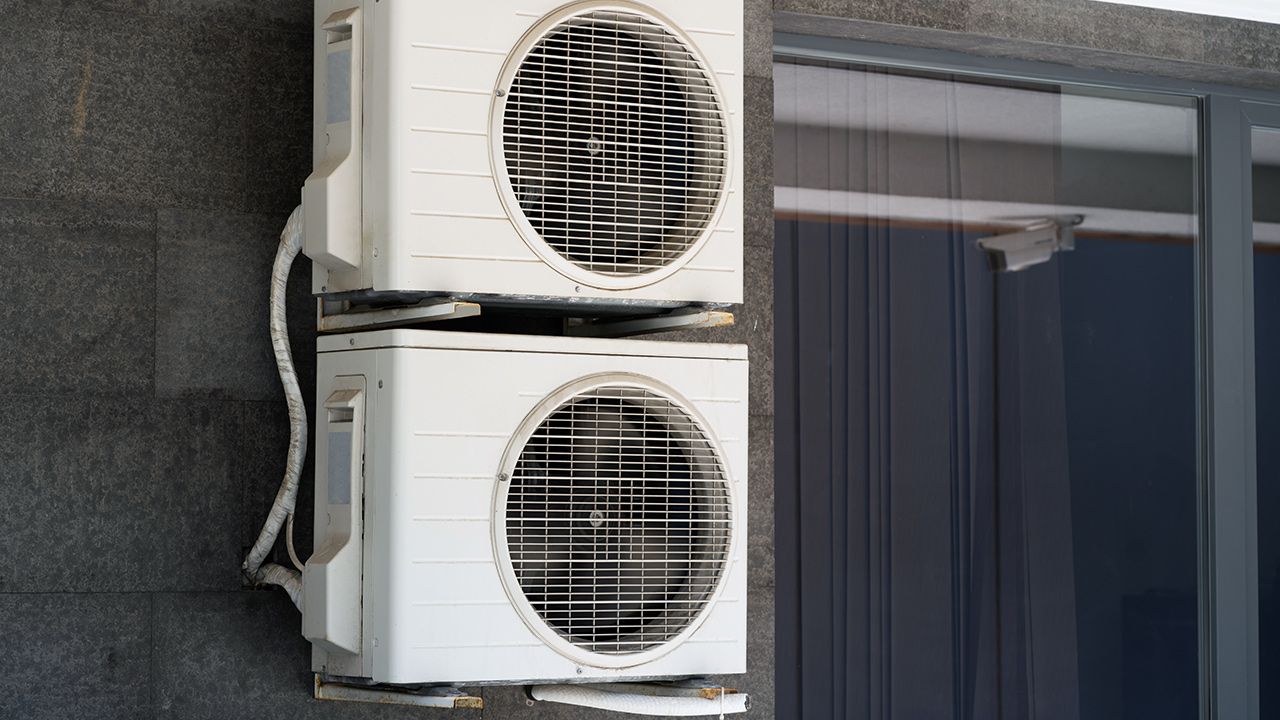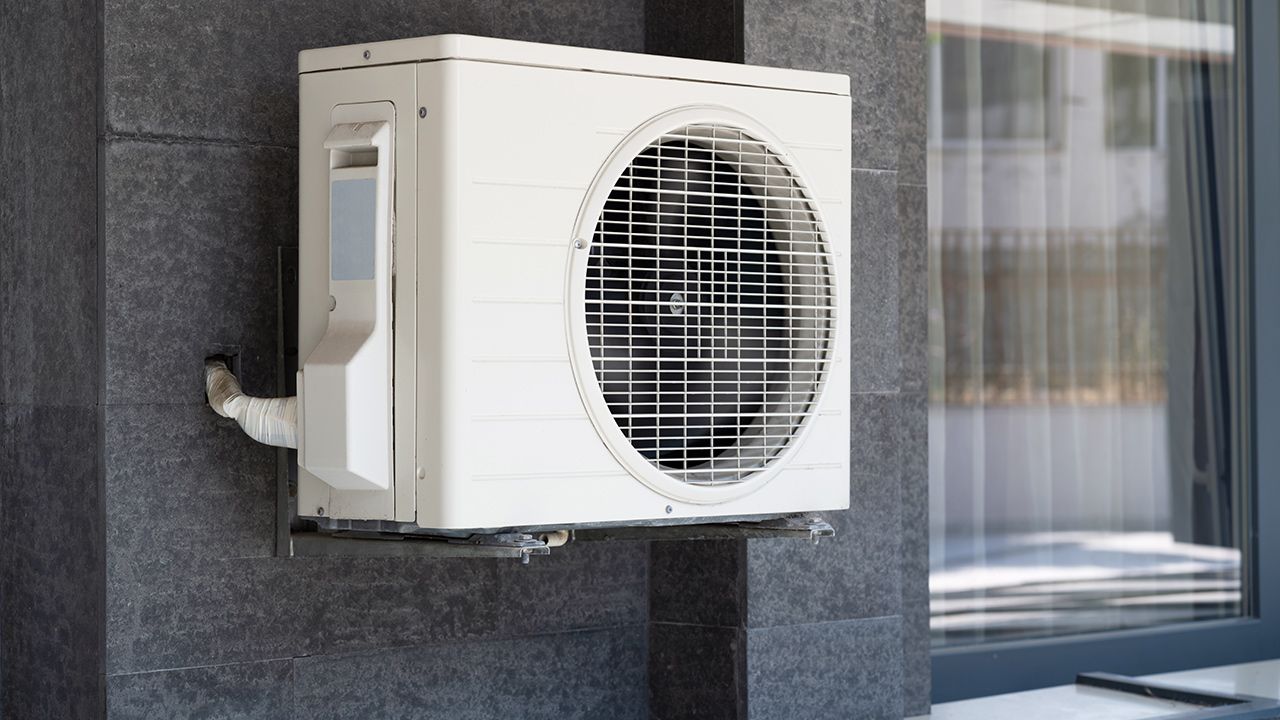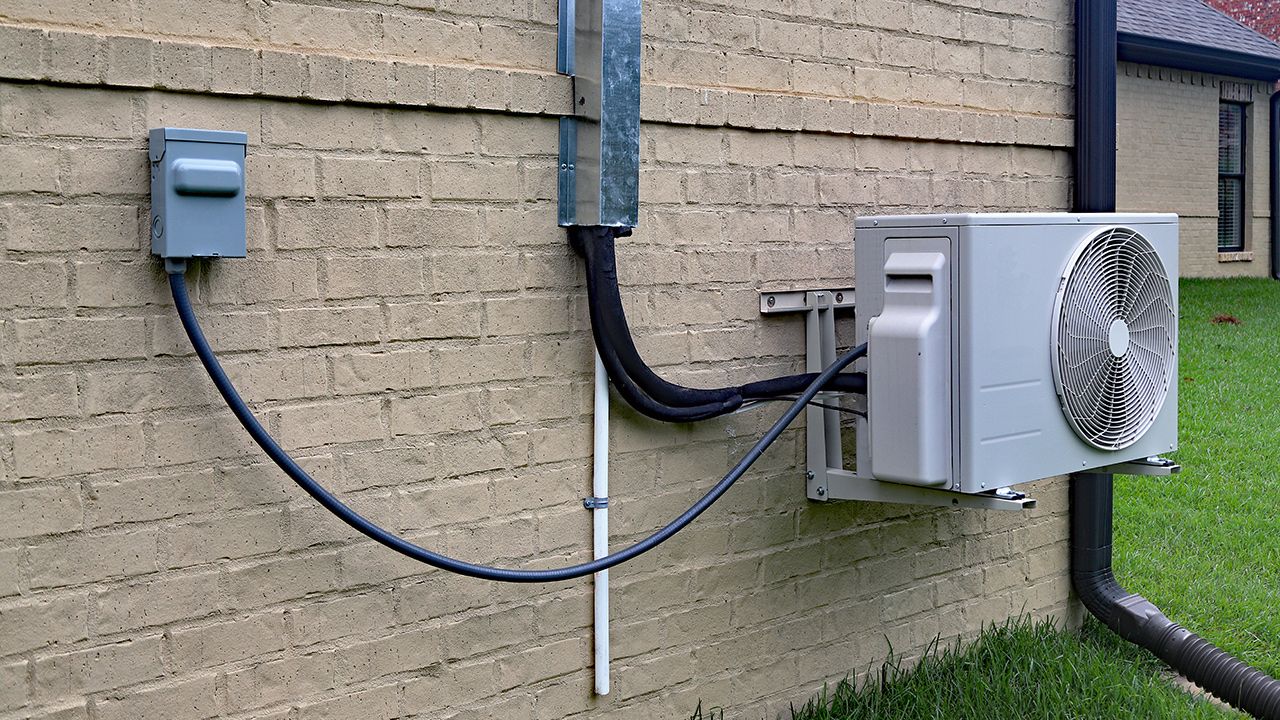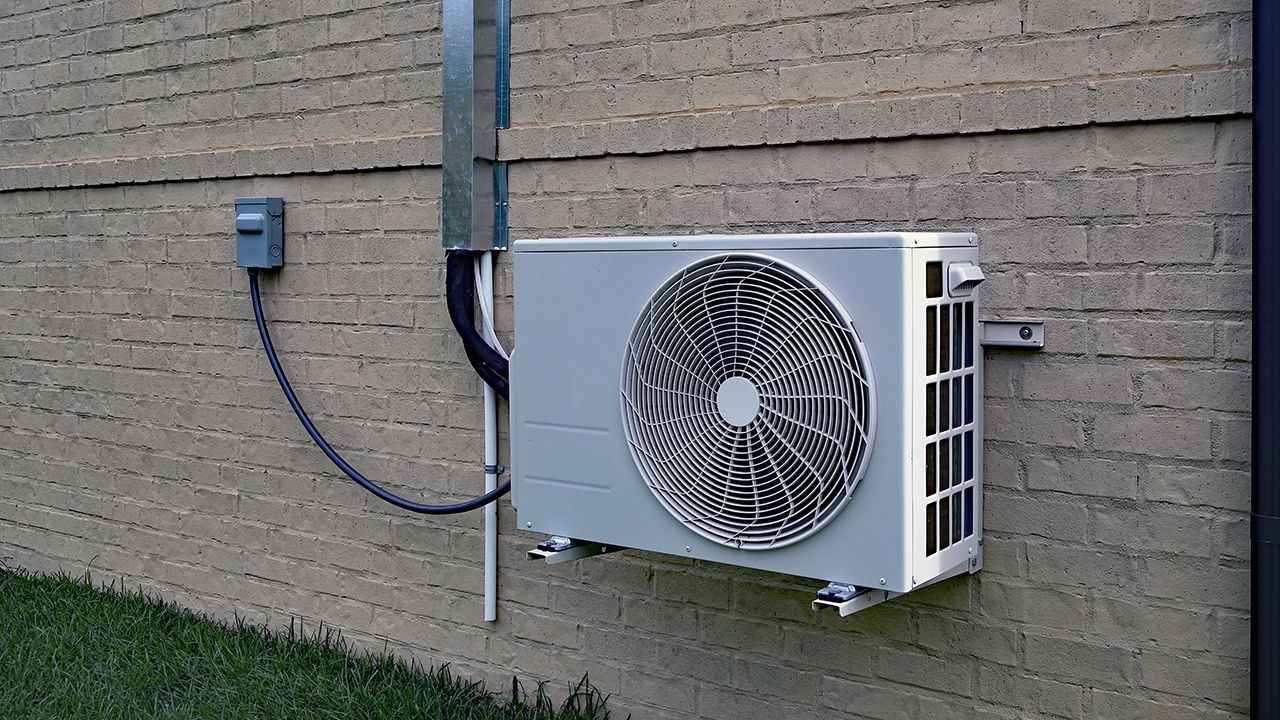
Picture this: You’ve made the decision to invest in a ductless mini split system to address your home's heating and cooling needs. But what comes next? The thought of an installation process might be daunting, but with mini splits, it’s often more straightforward than you might imagine.
- Overview of the Installation Process: Installing a mini split heat pump is remarkably simpler than many traditional heating systems. There's no need for installing distribution ductwork, making it a choice solution for room additions or non-ducted houses. The process generally involves setting up the outdoor unit (often a compressor) and connecting it to the indoor units placed in individual rooms. Each indoor unit caters to a specific room, ensuring optimal temperature control.
- Professional Installation: While the process might seem direct, it's vital to emphasize the importance of professional installation. Even the best mini split systems can fall short if not properly installed. Potential pitfalls range from improper placement, which can affect energy consumption, to issues with suction tubing or incorrect control configurations. A certified installer familiar with the mini split system you've chosen can ensure you're getting the most efficient use of energy.
- The Minimal Invasion: One of the standout features of mini splits is the minimal invasive procedure required for installation. Unlike traditional systems that may need extensive ductwork, the mini split only requires a small three-inch hole in the wall. This hole accommodates the connections between the indoor and outdoor unit. The lack of major structural changes means there’s less disruption to your home and your life. Plus, the discreet indoor units can be wall-mounted, ensuring they blend seamlessly with your home décor.
End this section with a nod to modern conveniences: On top of the installation benefits, most mini splits offer remote control capabilities. Imagine adjusting the room temperature without leaving your couch, or even better, having a wireless remote that lets you control multiple units simultaneously. This is the future of home heating and cooling solutions.
Join our newsletter
Stay on top of the latest in landscaping and lawn care with one valuable tip right in your inbox every Saturday morning.
What Exactly Are Mini Split Heat Pumps?
The world of heating and cooling solutions is vast and varied. One of the stars of this domain, especially in modern homes, is the mini split heat pump. But what is it exactly?
Mini Split Heat Pump Defined: At its core, a mini split heat pump is a type of ductless heating and cooling system. Unlike traditional central air systems that require extensive ductwork throughout a house, mini split systems work without those ducts. They consist of an outdoor unit, typically a compressor or condenser, connected directly to one or more indoor units. These indoor units are strategically placed in different rooms or zones of the house, allowing for individualized temperature control.
Differentiating Mini Splits: Traditional heating systems, whether they use hot water heat, space heaters, or extensive ductwork, rely on a singular source for heating and distributing cool or warm air throughout a house. This often leads to energy losses, especially through duct losses if the ductwork isn't well-maintained or insulated. In contrast, mini splits, with their direct room-to-room approach, eliminate many of these inefficiencies. There’s no loss of warmth or cool air through ducts, and with no need for installing distribution ductwork, homes retain their structural integrity.
In essence, mini split heat pumps are a modern answer to efficient heating and cooling. They cater to the contemporary demand for systems that offer direct, efficient, and individualized temperature control in different zones of a house.

Breaking Down the Components: Indoor Units & Outdoor Units
The elegance of the mini split system lies in its simplicity, broken down primarily into two main components: the indoor units and the outdoor unit. Both play pivotal roles in ensuring that your spaces are heated or cooled to perfection.
The Role of the Indoor Unit:
The indoor unit, often referred to as the indoor air handling unit, is sleek and designed to be wall-mounted or ceiling-recessed. Its main function is to blow cool or warm air directly into the room. Equipped with controls, they allow homeowners to adjust the temperature settings for individual rooms, catering to specific heating and cooling needs. This results in energy efficiency as you only heat or cool the rooms you use.
Significance of the Outdoor Unit:
The outdoor unit, typically robust and durable, houses the compressor which plays a vital role in the heat pump operation. This unit absorbs heat from the outside air and transfers it indoors during winter, and in summers, it does the opposite. However, it’s worth noting that while the outdoor unit is essential, it can sometimes be viewed as an eyesore, affecting the aesthetic appeal of your house’s exterior. This is a minor trade-off for the benefits it offers.
Harmonious Operation:
The magic happens when these units work together. The outdoor and indoor units are connected by conduit lines, which include power cables, refrigerant tubing, and a condensate drain. They communicate seamlessly to ensure that the desired temperature is maintained in each room, providing optimal comfort levels. It’s a dance of technology where each component knows its steps, ensuring a harmonious heating and cooling experience for homeowners.

Advantages of Mini Splits: More Than Just Heating and Cooling
While traditional heating systems like central air and hot water heat have their places, mini splits have emerged as an increasingly popular choice, and it's easy to see why. These systems offer advantages that go far beyond just heating and cooling, appealing to homeowners who value both functionality and modern aesthetics.
The Allure of Energy Efficiency:
One of the most significant benefits of ductless mini split systems is their energy efficiency. Unlike central forced air systems, where energy losses can be significant due to duct losses, mini splits operate without needing extensive ductwork. This means they're not prone to the energy losses associated with ductwork, translating into potential savings on your energy bills. Many mini split heat pumps also boast Energy Star ratings, affirming their credentials in efficient energy consumption.
The Power to Customize: Heating and Cooling Individual Rooms:
Gone are the days when a single thermostat would dictate the temperature of the entire house. With mini splits, homeowners can customize the heating and cooling for individual rooms. This means that the living room can be a different temperature from the bedroom, giving occupants unparalleled control over their environment. This feature not only contributes to comfort but also energy efficiency, as you're only conditioning the spaces you're using.
Convenience and Modernity: Features like Wireless Control:
In today's digital age, we expect modern conveniences, and mini splits deliver. Many come equipped with wireless remote controls, allowing users to adjust temperatures without even having to stand up. Others can even be integrated with smart home systems, letting homeowners control their heating and cooling needs with a smartphone app. The remote control features symbolize the blend of modernity and convenience that mini splits offer.
In a world where homeowners are increasingly looking for cooling solutions that are both functional and modern, mini splits stand out. With their energy efficiency, customization capabilities, and high-tech features, they're not just a heating and cooling solution — they're a lifestyle upgrade.

The Other Side: Disadvantages of Ductless Mini Split Heat Pumps
While ductless mini split heat pumps offer a plethora of benefits, like every heating and cooling system, they come with their own set of disadvantages. Before diving headfirst into a decision, it's essential to weigh both the pros and cons to ensure it aligns with your heating and cooling needs.
Initial Costs Can Be High:
One of the most cited drawbacks is the initial investment. Although mini splits can save money over time due to their energy efficiency, the upfront costs of purchasing and installing these systems can be significantly higher than traditional central air systems or window units.
Aesthetic Considerations:
For some homeowners, the appearance of the indoor units can be off-putting. Unlike centralized systems where the bulk of the components are hidden, mini split indoor units are typically wall-mounted in visible areas of a room. This could disrupt the aesthetic or décor of the space, especially if not integrated thoughtfully into the room's design.
Join our newsletter
Stay ahead of the curve in all things outdoor.
Get the inside scoop on the latest landscaping, lawn care, and fencing trends with 1 actionable tip every Saturday morning.
Maintenance Needs:
While ductless mini splits reduce the potential for duct losses, they require regular maintenance to ensure optimal performance. Filters should be cleaned or replaced routinely, and the outdoor unit needs to be kept free of debris and obstructions. This might be more hands-on than some homeowners are used to, especially when compared to central forced air systems.
Limitations with Larger Homes:
For sprawling homes or properties with many rooms, you might need multiple indoor and outdoor units to adequately meet your space conditioning requirements. This can add to costs and complicate the installation process.
In conclusion, while ductless mini split heat pumps are an excellent choice for many, they're not a one-size-fits-all solution. Homeowners should carefully consider both the advantages and disadvantages, comparing them to other heating systems available, to make an informed decision that suits their specific circumstances and preferences.
The Installation Narrative: From Indoor Units to Remote Control
Mini splits have revolutionized the heating and cooling industry, not just for their efficiency but also for the relative ease of their installation. Unlike traditional central air systems, which require extensive ductwork and can be disruptive to your home, ductless mini split heat pumps offer a more streamlined approach.
Overview of the Installation Process:
- Site Selection: The first step is determining where the indoor units and outdoor unit will be placed. This ensures optimal performance and comfort.
- Creating the Access Point: Here comes the magic of the minimal invasion – drilling a mere three-inch hole in the wall to connect the indoor and outdoor units.
- Mounting the Units: The indoor unit is typically wall-mounted, while the outdoor unit, which houses the compressor and condenser, is placed outside, ideally in a location that's free from obstructions.
- Connecting the Units: Using suction tubing, the indoor and outdoor units are connected through the previously drilled hole.
- Setting Up the Control: Whether it's a remote control or a wireless remote, configuring the control ensures you can easily manage the temperature settings from anywhere in the room.
The Need for Professional Installation:
While it might seem straightforward, the installation process has its intricacies. Ensuring the correct tilt angle for the outdoor unit, avoiding potential energy losses, and setting up the system for maximum efficiency requires expertise. A professional installation not only ensures your mini split heat pump operates optimally but also safeguards against potential pitfalls.
In essence, the ductless mini split system offers homeowners a less invasive installation method, transforming the narrative of home heating and cooling systems. The story isn't just about efficient temperature control but also about a seamless integration into your living space.

Ductwork: To Have or Not to Have?
In the realm of heating and cooling systems, the debate over ductwork remains at the forefront. As homeowners explore solutions to meet their heating and cooling needs, the appeal of ductless systems has grown considerably, mainly attributed to the rise of ductless mini split heat pumps.
The Appeal of Ductless Systems:
- Flexibility: Mini splits don't need extensive distribution ductwork to deliver cool air or heat, making them ideal for room additions or spaces where traditional ductwork might be impractical.
- Energy Efficiency: Without duct losses, which can waste up to 30% of energy in central air systems, ductless mini splits ensure efficient energy consumption.
- Space-Saving: A ductless mini split system requires only a three-inch hole for the suction tubing connecting the outdoor and indoor units, offering a compact cooling solution without the bulkiness of ducts.
Potential Downsides:
- Aesthetic Concerns: Some homeowners find the wall-mounted indoor units less appealing than a hidden hvac system with air conditioning ducts.
- Initial Costs: While they offer long-term energy savings, mini split heat pumps might have a higher upfront cost than some central forced air systems.
- Maintenance: The absence of ductwork doesn't mean no maintenance. Indoor units need regular cleaning to maintain optimal air quality and performance.
In conclusion, while ductless mini splits redefine space conditioning by sidestepping traditional ductwork, they're not a one-size-fits-all solution. Evaluating the benefits against potential drawbacks helps homeowners make an informed decision tailored to their home's unique needs.
Making the Choice for Your Home
Choosing the right heating and cooling system for your home is no small decision, and mini split heat pumps present an enticing option to consider. The flexibility they offer, their energy efficiency, and the possibility to customize temperature settings for individual rooms are notable advantages. But, like all systems, they come with their own set of considerations.
Whether it's the aesthetic concerns of wall-mounted indoor units or the initial installation costs, homeowners must weigh these factors against the many benefits ductless mini splits bring. It's also crucial to consider the uniqueness of one's home, from its design to its heating and cooling needs.
In the end, understanding the entirety of what ductless mini split heat pumps offer allows homeowners to make an informed choice. Taking into account the pros and cons, the installation nuances, and the potential long-term savings can guide you in determining if this system is the optimal choice for your household.
Join our newsletter
Stay ahead of the curve in all things outdoor.
Get the inside scoop on the latest landscaping, lawn care, and fencing trends with 1 actionable tip every Saturday morning.